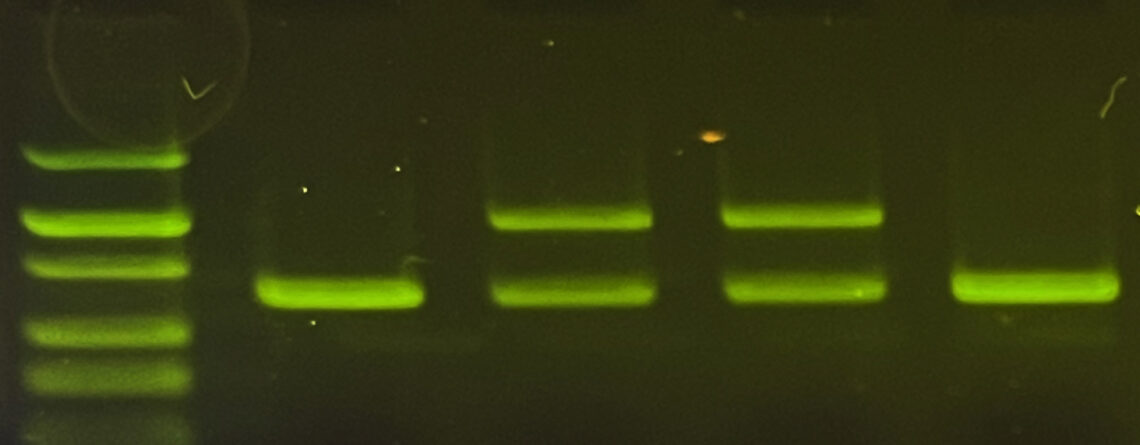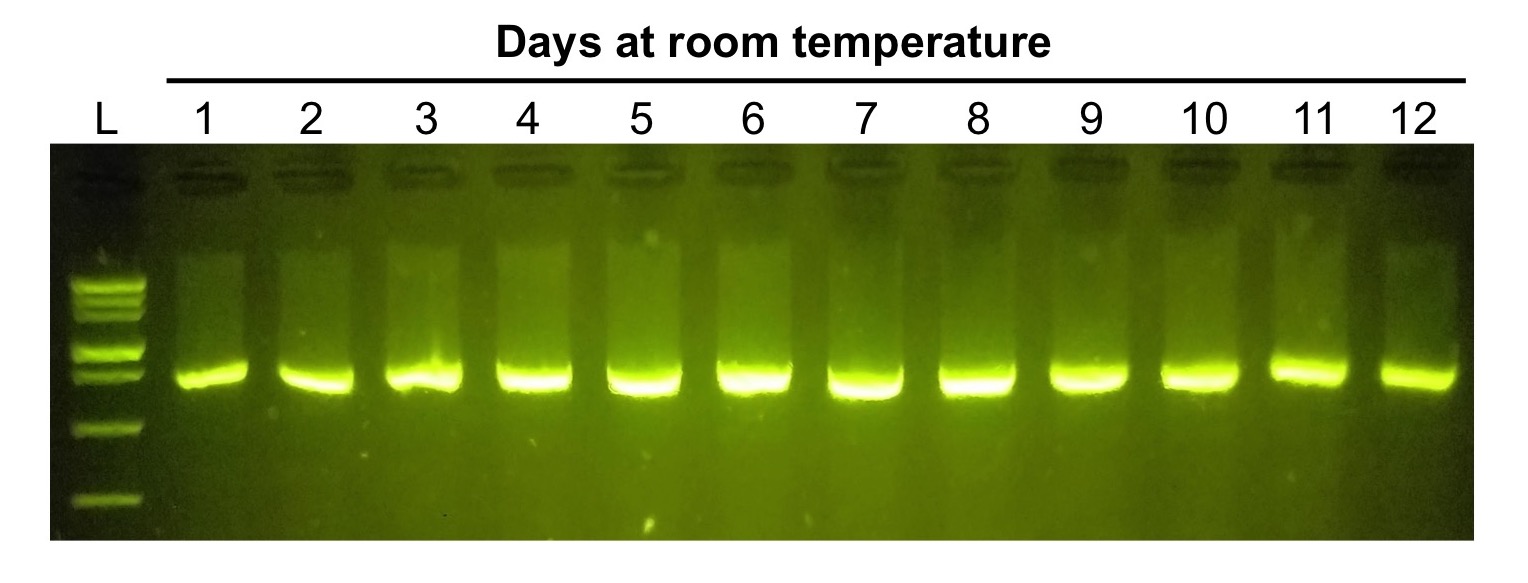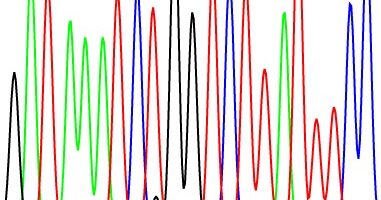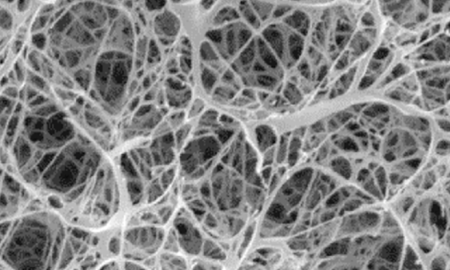Comparing gel electrophoresis buffers
What is a gel electrophoresis buffer?

A gel electrophoresis buffer is an electrolyte solution used in gel electrophoresis to provide a stable environment for the separation of nucleic acids. Salts in the buffer ensure that DNA molecules can move through the agarose gel matrix when an electric field is applied, while ions and counterions serve to maintain the pH of the solution throughout the gel run.
Choosing the right gel electrophoresis buffer
While buffers are simple in composition and relatively inexpensive, there are also many variations to choose from when it comes to running your gels. Because gel electrophoresis buffers maintain the pH and conductivity of the medium, ensuring proper migration of DNA molecules, choosing the right buffer is essential for the optimal separation of DNA molecules. There are many commonly used gel electrophoresis buffers, including TAE, TBE, and SB. But don’t worry, as there are more commonalities than differences between them.
Key features of common DNA gel electrophoresis buffers
Are you already suffering from buffer confusion? This post breaks down the key features and main differences between common buffers used in gel electrophoresis for DNA separation:
1. TAE buffer (Tris-Acetate-EDTA)
- Components: Tris base, acetic acid, EDTA.
- pH: Typically around 8.0.
- Conductivity: Higher than TBE (see below), resulting in higher heat generation.
- Applications: Suitable for larger DNA fragments (>1 kb), cloning, and when DNA recovery is required post-electrophoresis.
- Advantages: Less heat generation, preserving DNA integrity for downstream applications.
- Disadvantages: Poorer buffering capacity over long runs compared to TBE.
Our take: TAE is a great all-around buffer, especially when separating large fragments or cloning. But its lower resolution and buffering capacity make it a second choice to TBE (read on!)
2. TBE buffer (Tris-Borate-EDTA)
- Components: Tris base, boric acid, EDTA.
- pH: Typically around 8.3.
- Conductivity: Lower than TAE, allowing higher voltages and faster migration of DNA.
- Applications: Suitable for smaller DNA fragments (<1 kb), high-resolution separations.
- Advantages: Better buffering capacity, maintaining pH stability over long runs.
- Disadvantages: More heat generation, which can affect DNA integrity in long or high-voltage runs.
Our take: TBE is our favorite gel electrophoresis buffer! Especially when separating smaller fragments with differences of 100 base pairs or less. Its speed, high resolution and high buffering capacity make it great for our everyday applications, especially when cloning is not involved.

3. SB Buffer (Sodium Borate)
- Components: Sodium borate.
- pH: Typically around 8.5.
- Conductivity: Very low, allowing very fast DNA migration at high voltage.
- Applications: Suitable for both small and large DNA fragments, faster runs.
- Advantages: Efficient and rapid separations, less DNA smearing.
- Disadvantages: May require adjustments for optimal results in some applications.
Our take: SB is a great buffer when separating DNA at very high voltages. But it can take some optimization to get good resolution across the full range of DNA sizes. This, combined with its more limited availability and accessibility, make SB a great buffer for niche applications.
Summary of key differences between electrophoresis buffers:
In electrophoresis, TAE (Tris-Acetate-EDTA) buffer exhibits higher conductivity than TBE (Tris-Borate-EDTA) buffer. This higher conductivity can lead to increased heat generation during electrophoresis, potentially affecting the resolution of nucleic acid fragments. Conversely, TBE buffer has a lower conductivity, which allows for higher voltage applications and reduced heat production, making it more suitable for longer or high-resolution runs. SB, in turn, has even lower conductivity, allowing for higher voltage runs than TAE or TBE.
- TAE: Higher conductivity, slower migration, less heat, suitable for larger fragments and recovery.
- TBE: Lower conductivity, faster migration, better for small fragments, higher buffering capacity, great for everyday use.
- SB: Very low conductivity, very fast migration, suitable for high voltage systems, but less generally available than TAE or TBE.
Additional variables to optimize for perfect gel electrophoresis results:
Keep in mind that buffer choice is just one of several factors impacting the migration of nucleic acids in gel electrophoresis; other variables are discussed in the articles below:
Optimal buffers for gel electrophoresis systems by miniPCR bio
miniPCR bio offers several gel electrophoresis systems designed for various needs and budgets. These gel electrophoresis systems also vary in their versatility when it comes to choosing a gel electrophoresis buffer.
- GELATO™: GELATO is miniPCR’s top-of-the-line electrophoresis system. Running up to 50 samples at a time and with built-in timer and voltage selection features, GELATO also offers full flexibility when it comes to gel electrophoresis buffers. It is compatible with TAE, TBE, SB and other commonly used buffers.
- blueGel™: Compact and affordable, blueGel is a more accessible option for smaller-scale experiments. Like GELATO, it features built-in blue light transillumination for direct DNA visualization. With a very small buffer chamber, blueGel is very economical to run, but requires a high capacity buffer such as TBE. Although we strongly recommend TBE, blueGel can also be used with TAE, preferably at 2X strength.
- Bandit™: A gel electrophoresis kit designed for beginners or those with limited resources, Bandit is also versatile and economical when it comes to buffer use. We recommend using Bandit with TBE buffer, although it’s also compatible with TAE buffer.










